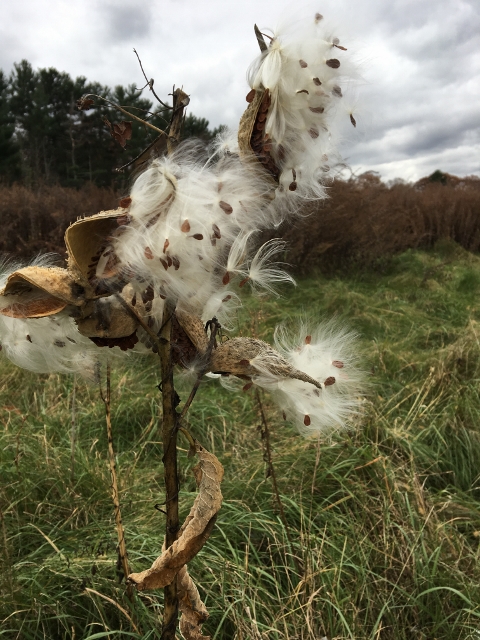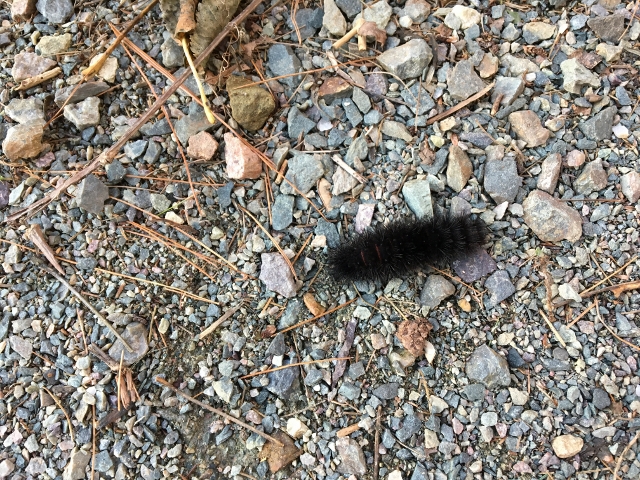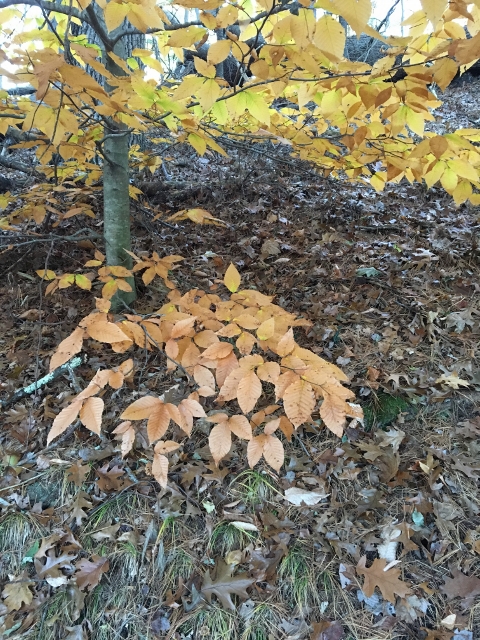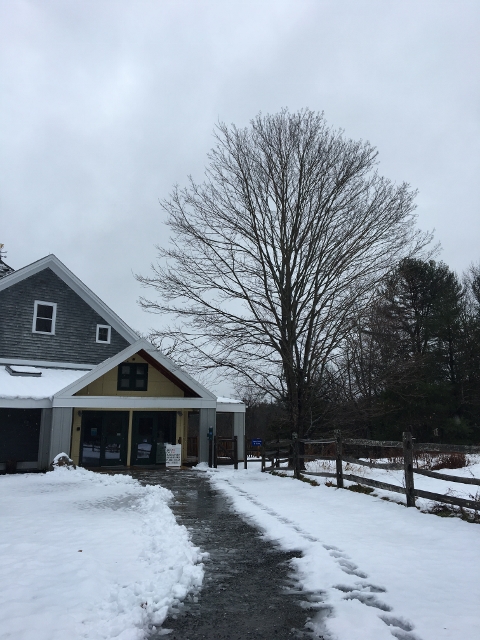Flying away to new homes, these milkweed seeds catch the wind for trips to new parts of the field.

Those that sprout and grow will be found next summer by Monarch butterflies to lay their eggs. The new plants will feed the caterpillars that hatch until they are ready to form a chrysalis; then hatch into the next generation of butterflies.
Wooly bears are caterpillars of the Isabela moth, often seen navigating the Broadmoor trails this time of year. Some have patterns of black and rust. This one is almost completely black. Many folks think the width of the colored bands can predict whether winters will be harsh or mild. There is no scientific evidence to support this idea, but it focuses attention on these little creatures.

A dead and rotting trunk was probably a perch for birds. Poison ivy vines sprouted from berries they deposited and have formed a wild sculpture.

Beech are among the last trees to lose their leaves. Some keep them most of the winter.

When you find pink survey tape on trees and shrubs and marked stakes in the ground, please leave them where you find them. They are wetland markers required for permits to improve our trails. Stay tuned for more about trail improvements and follow our progress on this blog in the coming year.

And now for a little winter teaser….. Between the time this post was started and publication, a wall of snow dropped four inches of snow at Broadmoor.


